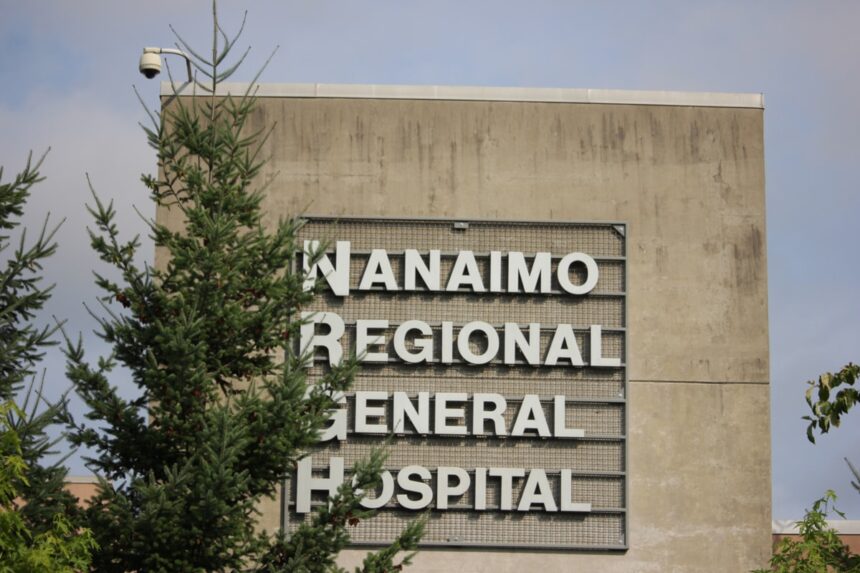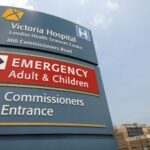The ailing infrastructure at Nanaimo Regional General Hospital has sparked urgent political intervention, with local MLA Adam Walker now pressing for face-time with Health Minister Adrian Dix to address what many residents call a long-overlooked healthcare crisis.
“Every time I visit constituents at NRGH, I see firsthand the strain on both facilities and healthcare workers,” Walker told me during a brief interview following yesterday’s committee meeting. “These aren’t just administrative problems—they directly impact patient care for thousands of Vancouver Islanders.”
The Parksville-Qualicum MLA sent his formal request after months of mounting community concern about overcrowding, stretched resources, and deteriorating infrastructure at the mid-island’s primary healthcare facility. Walker’s letter specifically highlighted the hospital’s struggle to manage growing regional demand with outdated facilities, some dating back to the hospital’s 1963 construction.
Healthcare challenges at NRGH aren’t new to locals. Last year’s Island Health performance data showed emergency department wait times averaging 3.2 hours, nearly 40 minutes above provincial targets. The hospital has consistently operated at over 110% capacity since 2021, forcing healthcare workers to create makeshift treatment areas in hallways during peak periods.
Dr. Melissa Chen, who has practiced at NRGH for nine years, describes infrastructure problems that directly affect patient outcomes. “We’re working with limited space, outdated monitoring equipment, and facilities never designed for today’s medical techniques or patient volumes,” she explained. “Our staff performs miracles daily, but there’s only so much we can do without proper investment.”
The hospital’s most pressing needs include expanded emergency department space, updated diagnostic imaging equipment, and modernized operating rooms. These improvements have remained on various provincial planning documents since 2018 without substantial funding commitments.
For Nanaimo resident Trevor McKinnon, these statistics represent more than numbers. After waiting seven hours with his elderly father in an emergency department hallway last month, he’s become a vocal advocate for hospital improvements.
“Dad was having chest pains, but there simply wasn’t anywhere to put him,” McKinnon said. “The nurses were amazing, constantly apologizing for something completely beyond their control. It shouldn’t be this way.”
Walker’s approach appears to be gaining traction beyond partisan lines. Nanaimo MLA Sheila Malcolmson, who serves in the same NDP government as Minister Dix, has expressed support for expediting hospital improvements. “While we’ve secured funding for the new patient tower and emergency department expansion planning, Nanaimo residents deserve accelerated timelines,” Malcolmson noted in a community newsletter last week.
Local healthcare advocacy group Better Care Nanaimo has collected over 7,000 signatures on their petition demanding immediate action on hospital funding. Group coordinator Melissa Sanderson says the community’s patience has run thin.
“We’ve heard promises about hospital improvements for nearly a decade now,” Sanderson told me at their latest community forum. “Meanwhile, our population continues growing, particularly among seniors who need more healthcare services. The infrastructure simply hasn’t kept pace.”
The funding challenges come amid competing healthcare priorities across the province. British Columbia’s 2023-24 health budget allocated $27.7 billion toward healthcare, representing a 5.2% increase over the previous year. However, critics note this barely keeps pace with inflation while demand for services continues climbing.
Island Health’s capital planning documents, last updated in February 2023, list NRGH improvements as “high priority” but position them behind several Lower Mainland projects in the funding queue. The health authority estimates comprehensive hospital modernization would require approximately $350 million in capital investment.
Mayor Leonard Krog has previously described the situation as “a matter of equity” for Vancouver Island residents. “Our taxpayers deserve the same level of healthcare infrastructure as those in Victoria or Vancouver,” he stated at last month’s council meeting. “This isn’t about politics—it’s about fair treatment for mid-island communities.”
Beyond the request for a ministerial meeting, Walker has asked for interim measures to address immediate pressures. These include additional surge capacity funding, temporary space solutions, and accelerated timelines for already-approved planning work.
What makes NRGH’s situation particularly challenging is its role as the referral center for numerous smaller island communities. When patients from Port Alberni, the Comox Valley, or oceanside communities need specialized care, they’re often transferred to Nanaimo—creating cascading capacity problems.
As Walker awaits response from Minister Dix’s office, he emphasizes this isn’t about political grandstanding. “Healthcare transcends party politics,” he said. “When constituents from across the political spectrum tell me their healthcare stories, they all share the same concerns. We need solutions, not rhetoric.”
For now, healthcare workers continue stretching resources while patients navigate a system under visible strain. As Dr. Chen puts it: “We’re proud of the care we provide despite the challenges, but imagine what we could accomplish with facilities that match the dedication of our staff.”
Minister Dix’s office hasn’t yet responded to Walker’s meeting request, though ministry spokesperson Andrea Watson confirmed they’ve received the letter and are “reviewing the concerns raised by the member for Parksville-Qualicum.”
Meanwhile, Nanaimo residents like McKinnon remain hopeful but pragmatic. “I’ve lived here all my life and love this community. We deserve better than patchwork solutions and endless delays. Someone needs to step up and make this a genuine priority.”






